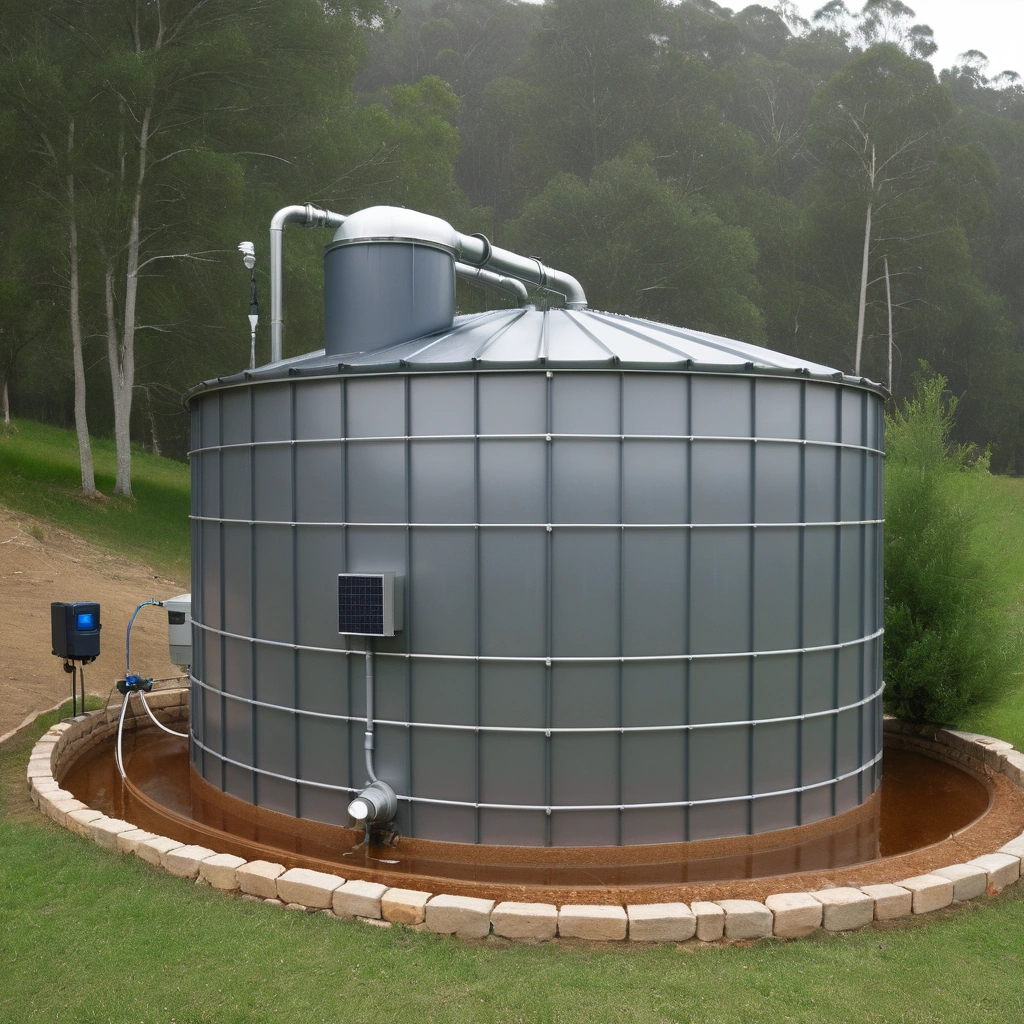Rainwater Harvesting Systems for Off-Grid Properties
Rainwater harvesting transforms precipitation into reliable water supply for off-grid properties, reducing dependence on wells or hauled water while providing high-quality soft water ideal for domestic use. Successful system design requires understanding local precipitation patterns, catchment characteristics, and storage economics to create resilient water supplies capable of meeting demands through seasonal variations and drought periods.
Precipitation analysis establishes the resource base for system sizing. Historical rainfall data from nearby weather stations provides monthly and annual averages, but local topography creates microclimates with significant variations. The 30-year normal precipitation data from NOAA represents long-term expectations, while examining extreme years reveals system performance during droughts. Design rainfall typically uses 80% of average to provide conservative estimates accounting for climate variability.
Catchment area calculations determine potential harvest volumes. The basic formula:
Annual harvest (gallons) = Catchment area (sq ft) × Annual rainfall (inches) × 0.623 × Runoff coefficient
Runoff coefficients account for losses from evaporation, absorption, and inefficiencies:
- Metal roofing: 0.90-0.95
- Asphalt shingles: 0.85-0.90
- Concrete/clay tiles: 0.80-0.85
- Gravel/green roofs: 0.50-0.70
For a 2,000 sq ft metal roof with 35 inches annual rainfall: Annual harvest = 2,000 × 35 × 0.623 × 0.92 = 40,118 gallons
First-flush calculations determine diversion requirements for roof cleaning. Initial rainfall washes accumulated debris, bird droppings, and atmospheric pollutants from catchment surfaces. Research indicates 0.01-0.02 inches (10-20 gallons per 1,000 sq ft) adequately cleans most roofs. Automatic first-flush diverters using floating ball valves or tipping buckets eliminate manual intervention while ensuring consistent water quality.
Intensity-duration-frequency (IDF) curves predict maximum flow rates for conveyance sizing. Short-duration, high-intensity storms generate peak flows potentially overwhelming undersized gutters and downspouts. The rational method calculates peak discharge:
Q = C × I × A / 96.23
Where Q = flow rate (GPM), C = runoff coefficient, I = rainfall intensity (inches/hour), A = area (sq ft).
For 4 inches/hour storm on 500 sq ft roof section: Q = 0.92 × 4 × 500 / 96.23 = 19.1 GPM
This flow rate determines minimum gutter and downspout capacity preventing overflow during intense storms.
Storage System Design and Materials
Storage represents the largest capital investment in rainwater harvesting systems, typically comprising 50-70% of total costs. Tank selection balances capacity requirements, available space, aesthetic preferences, and budget constraints. Understanding materials properties, structural requirements, and longevity factors ensures appropriate storage solutions providing decades of reliable service.
Storage capacity optimization balances supply, demand, and economics. The mass balance approach tracks cumulative inflow versus outflow:
Storage required = Maximum cumulative deficit between supply and demand
Monthly analysis reveals seasonal patterns:
- Winter surplus requires storage for summer use
- Monsoon regions need capacity for dry season
- Mediterranean climates store winter rain for summer irrigation
Reliability analysis using historical data determines probability of meeting demand. Systems designed for 95% reliability may require double the storage of 80% reliable systems. Cost-benefit analysis reveals diminishing returns beyond certain reliability levels, suggesting supplementary sources for extreme droughts.
Tank materials offer distinct advantages and limitations:
Polyethylene tanks dominate residential installations through low cost, easy installation, and longevity. Rotational molding produces seamless construction eliminating leak potential. UV inhibitors prevent degradation from sun exposure. FDA-approved resins ensure water safety. Dark colors inhibit algae growth. Disadvantages include limited sizes (typically under 10,000 gallons), temperature deformation potential, and difficulty repairing damage.
Fiberglass tanks provide excellent strength-to-weight ratios and corrosion resistance. Gel coat interiors remain smooth, preventing biofilm accumulation. Custom fabrication enables any size or configuration. Translucent construction requires painting or covering to prevent algae. Proper support prevents stress cracking at fitting penetrations. Costs exceed polyethylene but remain below concrete or steel.
Concrete cisterns offer maximum durability and capacity for large-scale storage. Cast-in-place construction adapts to any site configuration. Ferrocement techniques reduce costs for owner-builders. Thermal mass moderates temperature extremes. Lime leaching raises pH initially, requiring treatment or aging. Crack prevention through proper reinforcement and waterproofing proves critical for longevity.
Filtration and Treatment Technologies
Water quality management ensures harvested rainwater meets intended use requirements, from irrigation to potable consumption. Multi-barrier approaches combining physical filtration, biological control, and disinfection provide reliable treatment without complex technology unsuitable for off-grid applications. Understanding contaminant sources and removal mechanisms enables selection of appropriate treatment trains.
Pre-filtration removes debris before storage, preventing sediment accumulation and organic decomposition. Gutter guards exclude leaves and large debris while maintaining flow capacity. Leaf eaters create vortex separation, ejecting debris while directing water to tanks. Screen filters in downspouts provide final particulate removal:
- Coarse screens (1,000-500 microns): Leaves, insects
- Medium screens (500-100 microns): Pine needles, seeds
- Fine screens (100-50 microns): Pollen, dust
Self-cleaning mechanisms using spray bars or rotating brushes reduce maintenance requirements for remote installations.
Sedimentation utilizes gravity to separate suspended particles. Calming inlets prevent stirring accumulated sediment during filling. Floating outlets draw clearer water from mid-depth rather than bottom sediment or surface biofilm. Detention time calculations ensure adequate settling:
Detention time = Tank volume / Flow rate
Minimum 24-hour detention removes particles larger than 50 microns. Sludge removal through bottom drains maintains capacity and prevents anaerobic decomposition.
Biological filtration employs slow sand filters for pathogen removal without chemicals or power. Schmutzdecke biofilm development on sand surfaces provides biological treatment. Design parameters include:
- Sand depth: 24-36 inches minimum
- Sand size: 0.15-0.35mm effective size
- Filtration rate: 0.04-0.08 GPM/sq ft
- Biofilm development: 2-4 weeks maturation
Properly operated slow sand filters achieve 99%+ removal of bacteria and protozoa.
Pumping and Distribution Systems
Off-grid water distribution requires careful component selection balancing performance, efficiency, and reliability. Solar-powered pumping systems eliminate generator dependence while providing water on demand. Understanding hydraulic principles, pump characteristics, and system integration ensures reliable water delivery with minimal maintenance.
Pump selection matches flow and pressure requirements to available power sources. Total dynamic head (TDH) calculations determine pumping requirements:
TDH = Static lift + Friction losses + Pressure required
Static lift measures vertical distance from water source to highest outlet. Friction losses depend on pipe size, length, and flow rate. Hazen-Williams equation calculates friction losses:
hf = 0.002083 × L × (100/C)^1.85 × Q^1.85 / d^4.8655
Where hf = head loss (feet), L = pipe length (feet), C = roughness coefficient, Q = flow rate (GPM), d = pipe diameter (inches).
Solar direct-drive pumps operate without batteries, pumping whenever sufficient sunlight exists. Positive displacement pumps (diaphragm, piston) work well for high head/low flow applications. Centrifugal pumps suit low head/high flow needs. Linear current boosters optimize pumping in variable sunlight conditions, starting pumps earlier and running later than simple direct connections.
Pressure tank systems provide on-demand water without continuous pumping. Bladder tanks separate air from water, maintaining consistent pressure. Tank sizing prevents short-cycling:
Tank size = Flow rate × Runtime / Pressure differential factor
For 5 GPM pump with 2-minute minimum runtime and 20 PSI differential: Tank size = 5 × 2 / 0.25 = 40 gallons minimum
Variable frequency drives (VFD) controlling pump motors eliminate pressure tanks in some applications. Constant pressure delivery adjusts pump speed based on demand. Soft-start capabilities reduce generator sizing for backup power. Sleep modes stop pumps during zero demand, saving energy.
System Integration and Automation
Modern off-grid rainwater systems incorporate monitoring and control technologies enhancing reliability while minimizing maintenance. Remote properties benefit from automated operation and alerting capabilities. Integration with weather forecasting and usage patterns optimizes resource utilization.
Level monitoring provides critical system information. Ultrasonic sensors measure distance to water surface without contact, avoiding fouling issues. Pressure transducers at tank bottoms directly measure water column height. Capacitive sensors detect multiple preset levels for simplified monitoring. Wireless transmission enables remote monitoring without trenching cables. Solar-powered transmitters operate indefinitely at remote tank locations.
Automated controls optimize system operation:
- Fill valves maintain minimum storage levels from backup sources
- Transfer pumps balance multiple tanks automatically
- Overflow diversions redirect excess to secondary uses
- Treatment systems activate based on water quality parameters
- Leak detection systems identify abnormal consumption patterns
Weather integration enhances system management. Forecast data enables predictive control:
- Pre-storm tank drawdown maximizes harvest capacity
- Drought prediction triggers conservation measures
- Freeze warnings protect vulnerable components
- High-wind alerts secure equipment
Data logging enables system optimization through pattern analysis. Daily consumption patterns reveal peak demand periods for pump scheduling. Seasonal variations guide storage management strategies. Long-term trends identify system degradation requiring maintenance.


